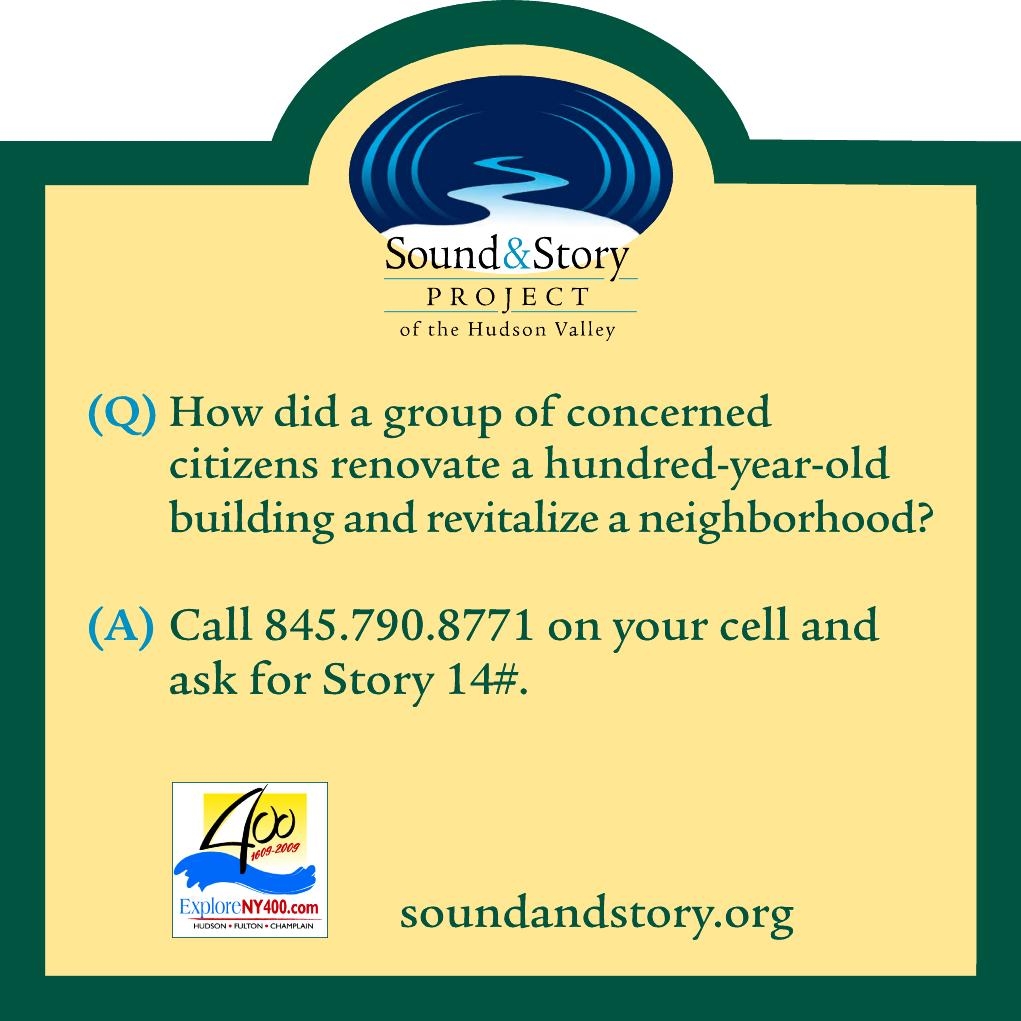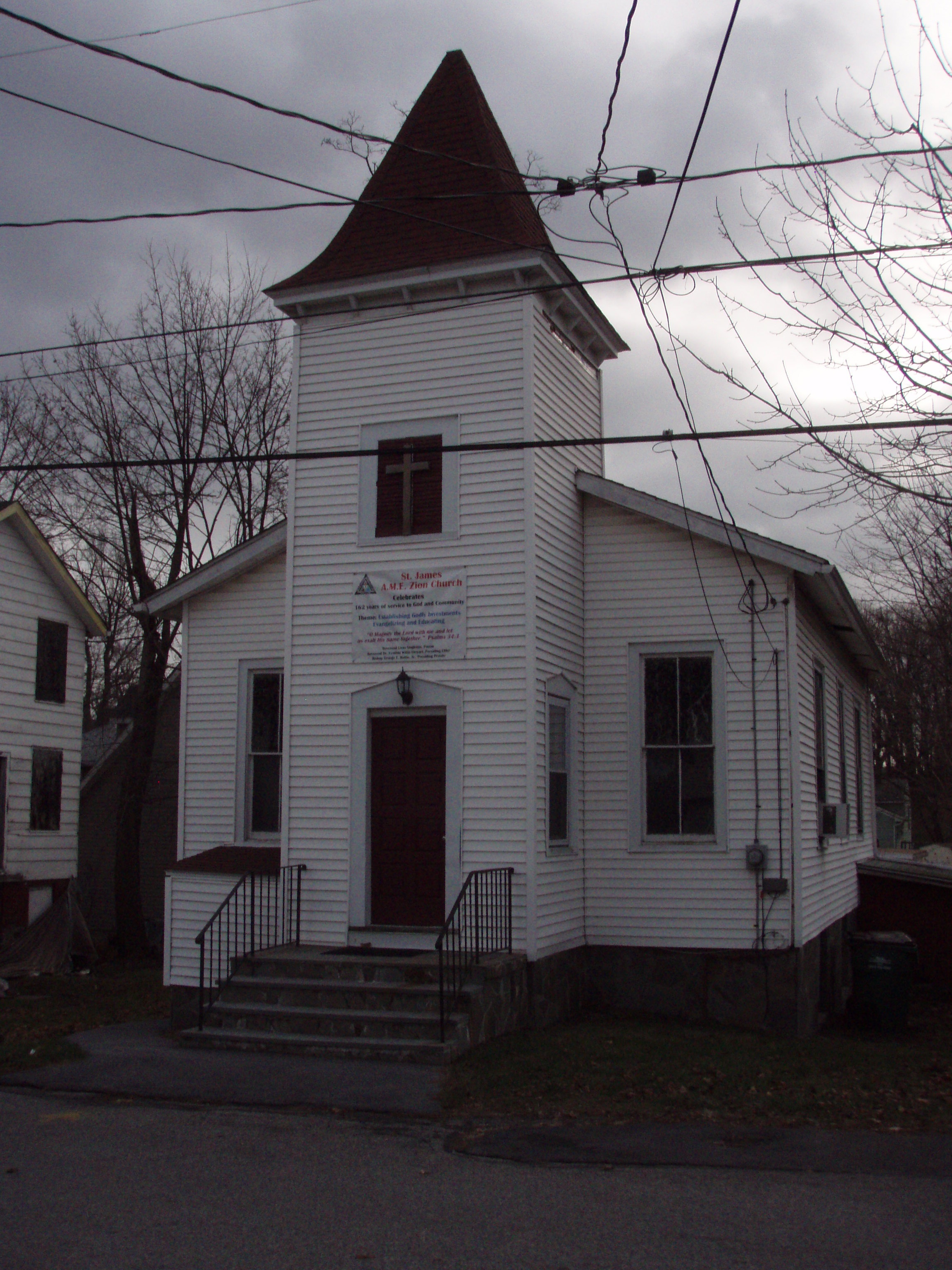Why was the AME Zion Church called the Freedom Church?

This program is part of the Newburgh Beacon Audio Adventure Tour. This sign is located at 23 Academy Street in Beacon, NY.
SAINT JAMES A.M.E. ZION CHURCH HISTORY
Submitted by Prof. Connie Whitener Perdreau on the occasion of St. James’ First Annual Scholarship Banquet for Beacon High School graduates. Dutchess Manor. October 23, 2009. Used with permission.

ABOUT THE AFRICAN METHODIST EPISCOPAL ZION CHURCH
Founded in 1796 in New York City, the African Methodist Episcopal Zion Church is among the first organized Black churches in America. James Varick, born in 1750 to a mother in slavery in Newburgh, New York, was one of the original founders of the church and later became the first Black Methodist Episcopal Zion Bishop. The A.M.E. Zion church, known from its inception as The Freedom Church, has long been associated with social activism, civil right, and education. Early A.M.E. Zion freedom fighters include Frederick Douglas, Sojourner Truth, Harriet Tubman, and Bishop Alexander Walters, who along with Dr. W.E.B. Dubois, helped to found the NAACP in 1909. Other notable Zionites in the 20th century include Paul Robeson and Coretta Scott King.
ABOUT SAINT JAMES A.M.E. ZION CHURCH IN BEACON
The history of St. James African Methodist Episcopal (A.M.E.) Zion Church at 23 Academy Street in Beacon, New York is an impressive one. St. James is the oldest African American church in Beacon, and one of the oldest churches in southern Dutchess County.
Originally founded in 1844 as the First Colored Methodist Episcopal Church, it became affiliated with the African Methodist Episcopal Zion church in 1847 in Fishkill Landing, near present-day Baxtertown Road. The principle leader and evangelist of this small congregation of free Negroes was James Gomer, who inspired others in the community to join the church until his death in 1892. In 1902, the church building was moved to South Avenue in Beacon and renamed in honor of its founding father and St. James the Apostle, one of the first disciples to follow Jesus.
When Dutchess Tools bought the land to build a large factory on South Avenue, the St. James church building was again moved, but this time to its permanent home at the corner of South Avenue and Academy Street. This property had originally been owned by James Gomer and was inherited by his only child Susan, who married Theodore Tyson. Susan passed away in 1911 and Theodore Tyson, who died at an advanced age in 1953, later donated the land for the church. Susan and Theodore Tyson had one child, Alice Tyson Dorsey, who lived near the church at 13 Academy Street until her passing in the 1970’s.
Until the 1940’s, St. James was the only African American church in Beacon, and because of this, the congregation grew and prospered. St. James was a long-time pillar in the Black community and has been declared an historical site in Beacon. Due to unfortunate circumstances, the church was forced to close its doors in 2000, but under God’s watchful eye, re-opened in 2003. We at St. James proudly celebrate our 165th anniversary in October of 2009.
_____________________________________________________________________
This story has been condensed and edited from a longer interview.
Interviewee: Prof. Connie Whitener Perdreau
Recorded: June 14, 2010
Time Period: 1796-2010
Subjects: St. James African Methodist Episcopal, James Varick, A.M.E. Zion freedom fighters
Collection: Newburgh-Beacon Audio Tour
Credits: Photos by Sound and Story
Produced by Eileen McAdam, Narrated by Jim Metzner
Funded by: New York Council for the Humanities
Some Rights Reserved: This production including audio, text, and images, may be used for educational and research purposes as long as it is not altered in any way and is credited to The Sound and Story Project.
Transcript: Coming soon



